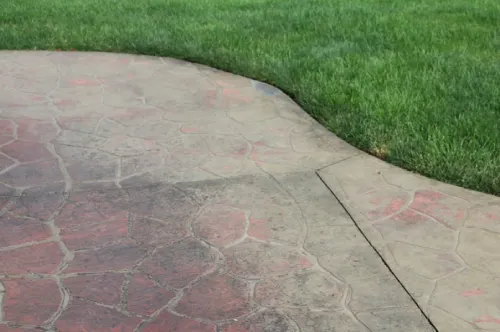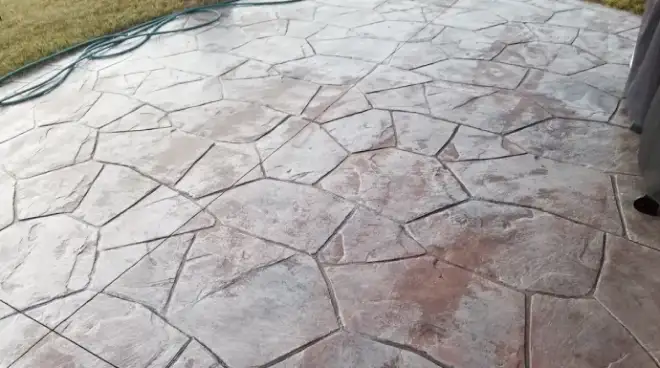Regarding concrete sealer, you should note that shelf life matters. Concrete sealer is essential in protecting and preserving the lifespan of your concrete surfaces. Now the fact is, does concrete sealer go bad?
Exposure to air and moisture can negatively impact the quality of your concrete sealer, causing it to go bad. Contamination, temperature fluctuations, and improper storage can also contribute to the degradation of your concrete sealer.
It’s crucial to be mindful of these factors to ensure that your concrete sealer remains effective and lasts as long as possible.
Here, we will discuss these reasons briefly, how to detect if it’s bad, and the best ways to store and use it to prolong its shelf life. So, let’s begin.
Why Does Concrete Sealer Go Bad & What Do You Do?

When you purchase a concrete sealer and open it, the materials inside become exposed to oxidation. As time passes, the sealer will begin to break down due to these environmental elements and contaminate your application surface.
By the way, a concrete sealer can go bad or expire due to several factors:
- Reason 01: Shelf Life
- Reason 02: Exposure to Air and Moisture
- Reason 03: Contamination
- Reason 04: Temperature Fluctuations
- Reason 05: Improper Storage
Reason 01: Shelf Life
If you want your sealant to perform at its best, paying attention to its shelf life is crucial. The manufacturer determines the shelf life of concrete sealer, and it’s usually indicated on the product packaging or label.
This shelf life is important because, over time, the chemical composition of the sealer can change, leading to a decrease in its performance. Due to this, using an expired concrete sealer can lead to poor adhesion, discoloration, and even failure of the sealer.
You should always check the expiration date before purchasing or using a concrete sealer. If the sealer has exceeded its shelf life, it’s best to dispose of it and acquire a fresh batch to ensure the effectiveness of the sealer.
Reason 02: Exposure to Air and Moisture
Concrete sealers can easily react with air and moisture, leading to a process called oxidation. This reaction can cause the sealer to thicken, lose its effectiveness, or form a layer of film on the surface.
These changes can affect the performance of the sealer and make it less effective in protecting your concrete surfaces. Therefore, it’s essential to minimize the exposure of the sealer to air and moisture.
After opening the container for your concrete sealer, reseal it tightly to prevent air from entering. You can also transfer the sealer to a smaller container to minimize the air space, which can reduce the risk of oxidation.
You should avoid using the sealer if it has thickened or developed a film on its surface, which indicates that it has oxidized. Instead, dispose of it properly and get a fresh batch of sealer.
Reason 03: Contamination
Contamination can occur if the sealer is improperly stored or if the container is not tightly sealed. If foreign substances, such as water, dirt, dust, or other chemicals, find their way into the sealer, it can alter its chemical properties and render it less effective.
To prevent contamination of the sealer, you should follow the manufacturer’s guidelines for storage. Avoid transferring the sealer to other containers that may introduce contaminants. Keep the container clean and dry, away from water, dirt, dust, or other chemicals.
Reason 04: Temperature Fluctuations
Extreme temperature fluctuations, especially freezing temperatures, can cause the sealer to separate or coagulate, making it unusable.
This is why protecting your concrete sealer from these conditions is crucial. To avoid any issues, make sure you store the sealer in a cool, dry place that’s away from heat and freezing temperatures. Leaving it in a vehicle or exposed to outdoor elements for extended periods is a big no-no.
If the sealer has been subjected to extreme temperatures, check its consistency and quality before use. Protecting your concrete sealer from temperature fluctuations is a small but important step in ensuring the longevity and effectiveness of your sealant.
Reason 05: Improper Storage
Unless you follow the manufacturer’s instructions, improperly storing sealants can reduce their effectiveness and longevity.
Exposure to direct sunlight, high temperatures, or extreme humidity can degrade the sealer and reduce its effectiveness. Therefore, storing the container in a cool, dry place away from direct sunlight or heat sources is essential.
It’s also important to ensure that the container is tightly sealed after each use. This is crucial to prevent any exposure to air, which can cause the sealer to thicken or solidify over time.
If you notice any signs of degradation or changes in the sealer’s texture, odor, or appearance, it may be best to replace it.
Where Can You Buy Quality Concrete Sealer?

You can buy quality concrete sealers from various suppliers, both online and in brick-and-mortar stores. Always look for products with good reviews and customer feedback to ensure you get the best value for your money.
Also, read through product labels carefully to make sure that the sealer contains all the necessary ingredients for effective sealing on your particular type of surface.
Finally, compare prices between different suppliers before making your purchase. This will help you find the most accurate deal for your concrete sealing needs.
For your convenience, we already have reviews on the best sealer for concrete curbing that is also versatile. Each is specially inspected to ensure top-notch protection for your outdoor spaces. So, don’t forget to check them out before purchasing.
How long does the sealer last once opened?
Once you open your sealer, it gradually loses its effectiveness. For optimum results, aim to use it within a year. When exposed to air, the sealer will begin to solidify and cure, which can negatively affect its ability to shield concrete surfaces.
If you have an open bottle of concrete sealer sitting on your shelf for several years, it might not work as efficiently as it did initially. To extend the life of your concrete sealer, make sure to store it appropriately.
What is the shelf life of concrete sealer?
To ensure your concrete sealer is effective, use it within a year of opening and store it in a cool, dry location away from direct sunlight. Sealers generally last 2 to 4 years, but using them within 18 months to two years is best.
Ensure the sealer is applied evenly, completely dried, and avoided harsh chemicals or abrasive cleaners that may damage it. Protect your concrete surfaces for years to come with the proper use and storage of your concrete sealer.
How do you know if the concrete sealer is bad?
When a concrete sealer becomes discolored, begins to peel, or flake, it is a sign that it needs to be replaced. Poor water repellency, reduced durability, or ineffective protection against stains indicates the sealer has gone bad.
Several factors can contribute to these problems, such as harsh environmental conditions, incorrect application, or product aging. Observing its performance is the easiest way to tell if a sealer needs replacing.
How do you test concrete sealers?

Testing your concrete sealer is crucial in ensuring its effectiveness and providing adequate surface protection.
To test your sealer, thoroughly clean the surface and allow it to dry completely. Next, pour a small amount of water onto the surface and observe its behavior. The sealer is still effective if the water beads up and stays on the surface.
Conversely, if the water soaks into the concrete, it indicates that it’s time to reapply the sealer.
To test epoxy and polyurethane sealers, rub a moderate amount of denatured alcohol on a clean cloth and rub it over the concrete’s surface. If the sealer remains unscathed, it’s still effective. But if the sealer comes off easily, it’s time to reapply it.
Is Your Concrete Sealer Still Effective: How to Tell
Concrete sealer can go bad over time due to various environmental factors, ultimately affecting its performance and longevity. Following the manufacturer’s indicated shelf life and storage instructions of the concrete sealer is essential to ensure optimal use.
Exposure to air and moisture can lead to thickening, loss of effectiveness, and film formation, while contamination can alter its chemical properties. Temperature fluctuations can cause separation or coagulation, affecting the sealer’s quality.
To determine if a concrete sealer has gone bad, observe signs such as discoloration, peeling, reduced water repellency, or reduced effectiveness in protecting against stains. Testing the sealer through water beading or denatured alcohol tests can provide valuable information on its point.
Regular inspections and timely replacement are crucial in maximizing the longevity and effectiveness of your concrete sealer.
